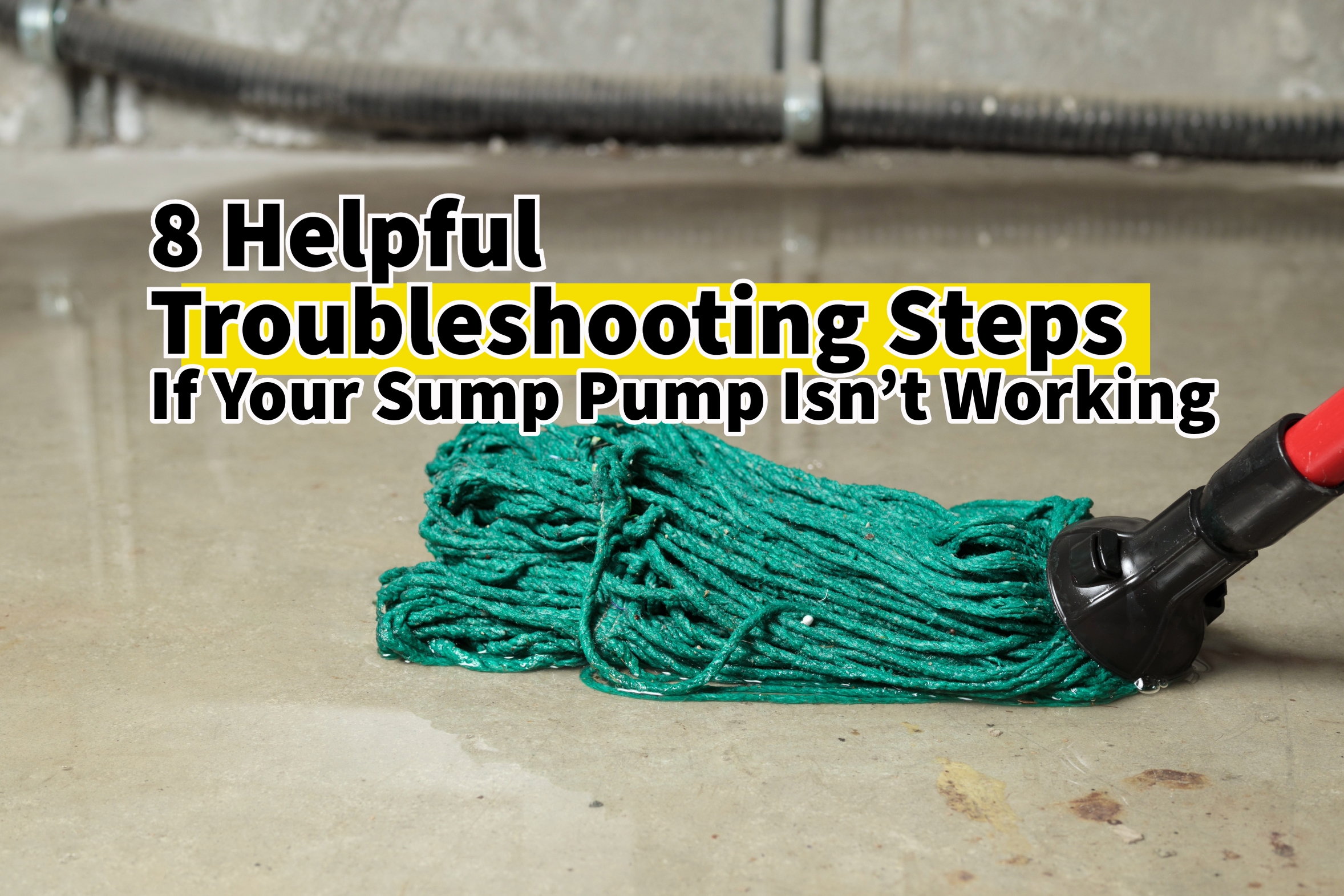Has your sump pump stopped working? With the recent weather we’ve been having, it’s not uncommon for those of us who live around here. Especially with all the snow melt and rain we get during the winter season, sump pump issues are pretty common right now. Unfortunately, when your sump pump stops working, it’s not something you want to procrastinate on getting fixed as soon as you can. We definitely don’t want our customers dealing with flooded basements and water damage, among other not-so-great things.
Sump pumps are designed to pump water out through the discharge pipe and direct it away from your home’s foundation, keeping it safe from potential damage. But when a sump pump suddenly stops working, it can quickly lead to a flooded basement and a whole bunch of other problems. Don’t worry, though; our team at Loveland Plumbing & Drain has got your back (and your basement)! We can help you troubleshoot any issues you might be facing. And don’t even have to wait for a problem to arise. Even if you are not currently dealing with sump pump issues, take a moment today to familiarize yourself with some of the most common sump pump troubleshooting steps.
TRY THESE STEPS TO PINPOINT THE ISSUE:
- The Power Source – First things first, let’s check the power supply. Power outages can often be the culprit behind a sump pump malfunction. So, if your sump pump stops working, the first thing you should do is make sure it’s plugged in and receiving power. You can even test the outlet with another device to see if that’s the issue. And if all else fails, try unplugging and plugging the pump back in. Just keep in mind that this might only be a temporary fix.
- The Motor – Secondly, let’s test the pump motor. See if you can hear any unusual noises. If the motor isn’t running, no worries! Just check the circuit breaker and reset it if needed.
- The Basin – Now, onto the pump’s basin. It’s time to check the inside and see what’s going on. Take a moment to inspect the sump pump basin for any debris, dirt, or even ice buildup. If you come across any, make sure to remove it to ensure that nothing obstructs the pump’s impeller.
- The Float Switch – Next, move your attention to inspecting the float switch as well. Take a moment to check if it’s moving properly and clear out any debris if necessary. Remember, a stuck or frozen float won’t be able to activate the pump as it should.
- The Check Valve – If you’re still having sump pump troubles, the check valve (or overflow valve) needs to be checked, too. So, you’ll want to make sure the valve is installed correctly and not blocked by any debris. Sometimes, the pipe above it can get clogged, causing the check valve to malfunction. If the check valve is doing its job, it will prevent water from flowing back into the sump pit.
- The Discharge Pipe – Still have not pinpointed the issue? Let’s move on to examining the discharge pipe. If your basement is flooded and the water isn’t being discharged properly, chances are the discharge pipe is clogged. So, your next step is to locate the discharge pipe and make sure it is free from any obstructions.
- The Weeping Hole – Have you considered the weeping hole as an option? You’ll need to search for and check this little hole on the discharge pipe of your sump pump. It’s there to release air and keep everything running smoothly. But if it gets blocked, your pump won’t work properly. So, if you find a clog in the weeping hole, you’ll need to clear it out.
- The Pump Size – If you’re experiencing an overwhelmed pump situation where your sump pump is struggling to handle the high volumes of water, it might be incorrectly sized for your space. So, it may be worth considering an upgrade. This will help prevent this issue from happening repeatedly.
You’ve got this! Just a little determination and some focused DIY troubleshooting, and you should be able to figure out what’s going on with your sump pump. So, take your time, move slowly, and be careful as you assess the situation and go through each troubleshooting step. Remember, we’re here to help!
CONSULT PROFESSIONAL HELP:

Are you still scratching your head, trying to figure out what’s going on? Don’t worry; we’re here to help! If you’ve gone through these troubleshooting steps and the issue still persists, it might be time to reach out to us. So don’t hesitate to give us a call!
Consider These Helpful Sump Pump Tips:
Before we wrap things up, here are a couple of valuable tips to help you maintain your sump pump going forward: If you want to keep your sump pump running smoothly, it’s a good idea to make it a habit to quickly check on it every now and then. Just make sure everything is running smoothly, and there are no strange sounds coming from it.
On top of that, to keep your sump pump running smoothly, it’s important to keep the area around it clutter-free. Loose debris and random objects can cause problems and clog the pump. So, make sure the lid is always firmly in place to keep unwanted particles out. A secure lid will help prevent any debris from getting into the pit and interfering with the pump’s functionality.
Your plumbing system is like the heart of your home. And, man, there are so many things that can go wrong with it. That’s why it’s important to put your home in the hands of someone you can totally trust. At Loveland Plumbing & Drain, we’re all about being that trusted someone. We care about your safety, your comfort, your satisfaction!
If you’ve got any plumbing issues, just reach out to Loveland Plumbing & Drain. You can call us today at (513) 644-0556 or schedule an appointment now by clicking here!

